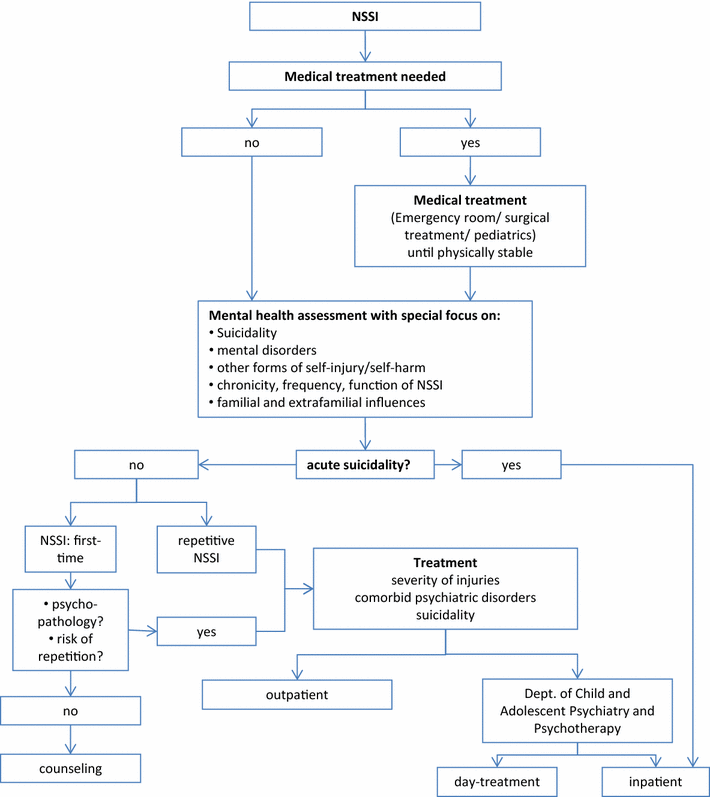Treating nonsuicidal self-injury (NSSI) in adolescents: consensus based German guidelines
- PMID: 27933099
- PMCID: PMC5126819
- DOI: 10.1186/s13034-016-0134-3
Treating nonsuicidal self-injury (NSSI) in adolescents: consensus based German guidelines
Abstract
Background: Nonsuicidal self-injury (NSSI) is a frequent and clinically relevant phenomenon in adolescence. Within Europe, Germany has one of the highest prevalence rates in youth with lifetime prevalence ranging between 25 and 35%. However, treatment guidelines for NSSI are not yet available.
Methods: Consensus based clinical guidelines were created by a working group consisting of members of eleven medical, psychological or psychotherapeutic professional national associations, and two members of patient self-help and prevention groups. The guidelines were developed in consecutive expert meetings and literature searches and agreed on in a final consensus conference.
Results: Given that evidence on both the psychotherapeutic and psychopharmacological treatment of NSSI is limited, a consensus based approach was chosen. The consensus indicated that due to the accumulating evidence on the efficacy of psychotherapeutic approaches, core elements of psychotherapy should be provided in treatment of NSSI. A specific psychopharmacological therapy of NSSI cannot be recommended. In addition, the guidelines provide recommendations for surgical intervention of NSSI.
Conclusions: In accordance with the heterogeneous level of evidence, recommendations for the clinical management of NSSI in adolescence were made during a consensus conference after reviewing available literature. There is still a lack of knowledge on prevention as well as clinical interventions, which needs to be addressed by further clinically relevant studies.
Keywords: Adolescents; Guideline; NSSI; Nonsuicidal self-injury; Self-harm; Therapy.
References
-
- American Psychiatric Association . Diagnostic and statistical manual of mental disorders fifth edition (DSM 5) Washington: American Psychiatric Association; 2013.
LinkOut - more resources
Full Text Sources
Other Literature Sources


